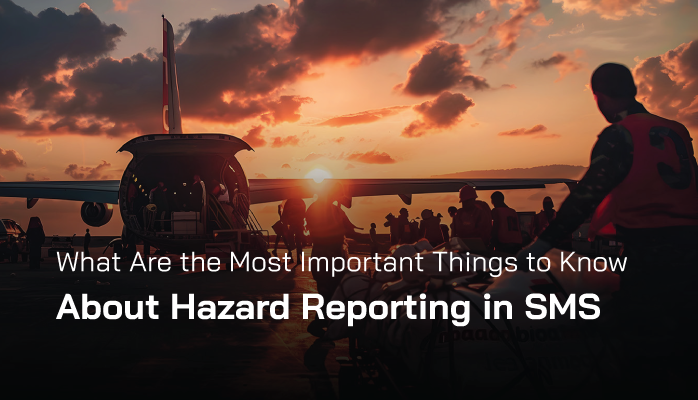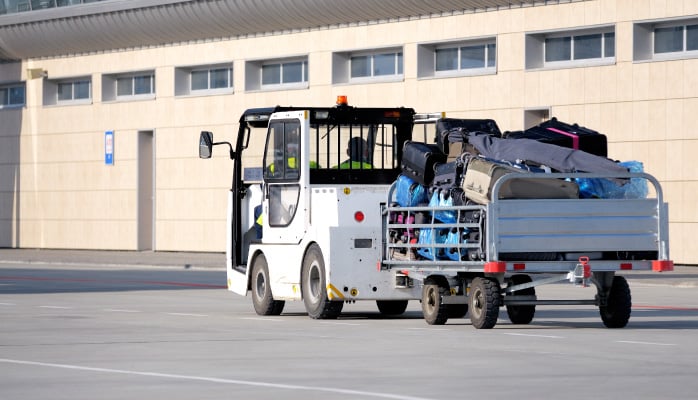Hazard Reporting More Than Just Hazards

“Hazard reporting” is a bit of a misnomer because employees report much more than hazards. Hazards are simply one type of thing that people report. Perhaps a more accurate expression for hazard reporting would be “issue reporting.”
Hazard reporting in SMS includes all types of concerns, such as:
- Quality concerns;
- Operational concerns;
- Compliance concerns;
- HR concerns; and
- Security concerns.
Furthermore, beyond hazard, employees will be reporting:
- Identified root causes;
- Hazardous sources or conditions;
- Risk occurrences; and
- Threats that lead directly to hazard occurrence.
There are many concerns apart from hazards that provide prime opportunities for reporting.
How to Develop Hazard Reporting Process
Your hazard reporting process is the key element of your safety risk management, SMS design portion of your safety program.
Your hazard reporting process should include:
- A process to report issues;
- Guidance for how to use that process;
- Reporting form(s) that employee used to document issues;
- Non-punitive reporting policy; and
- A strategy for making employees aware of safety concepts, concerns, and trends.
Your hazard reporting process should document every aspect of how:
- Employees will report issues; and
- How your SMS will help them report.
What Are Goals of Hazard Reporting in SMS

Though it might seem obvious, the goal of hazard reporting in SMS is something that is missed in SMS. This is clear based on the way many programs design their hazard reporting process.
The goal of hazard reporting is NOT to simply report hazards. The real goal of hazard reporting is to:
- Gather data; and
- Use that data to make decisions.
Gathering data allows you to:
- Understand your SMS performance;
- Monitor effectiveness of risk controls;
- Mitigate safety concerns; and
- Know which issues are most relevant to your operations.
Making decisions with data involves:
- Updating the design of your SMS;
- Monitoring trends;
- Classifying reported issues; and
- Improving your SMS.
Because a safety program that pushes employees to only report certain types of concerns is setting themselves up for failure. This is because they will be missing potentially crucial information.
A best practice is to gather as much data as possible so that relevant information is available when it’s needed.
Related Articles on Hazard Reporting in Aviation SMS
- 10 Most Important Hazard Reporting Forms Aviation SMS
- Best Practices for Hazard Reporting in Aviation SMS - With Examples
- Examples of Good Hazard Reporting Forms in Aviation Safety
What Issues Should Employees Report
Gathering as much data as possible happens by:
- Encouraging employees to report all issues, even if they seem negligible.
The reaction many safety managers will have to this statement is:
- It seems incredibly inefficient to include all these extra reports; and
- It seems like a big waste of time to manage a bunch of extra “negligible” reports.
This is incorrect thinking that highlights the fact that many safety professionals are misinformed about the goals of hazard reporting. Reporting all issues, no matter negligible has the following benefits:
- ALL data has the potential to expose trends and reveal potential danger;
- Reporting all concerns establishes a fantastic reporting culture;
- With proper SMS tools, managing these “very minor” hazard reports is quick and easy; and
- Having a large amount of data provides top managers with a large pool of knowledge to make decisions with.
Nothing about the above points is a “waste of time” or “incredibly inefficient.” It is significantly more inefficient and time-consuming to manage accident investigations, manage serious incidents, and recover from serious incidents.
Final Thought: How to Offer Guidance for Hazard Reporting
Guidance for hazard reporting does not have to be complicated. In fact, the more straightforward the guidance, the better.
Some good practices for providing hazard reporting guidance are:
- Provide lots of hazard identification training;
- Assess hazard identification knowledge;
- Have a very simple hazard reporting process (a stranger should be able to do it); and
- Have a chart of preferred types of issues to report.
Following these guidelines is a fantastic way to ensure that employees recognize what to report, and know how to report it.
For more information about this, see our awesome pamphlet that you can distribute in your organization to encourage hazard reporting best practices:
Last updated December 2024.





